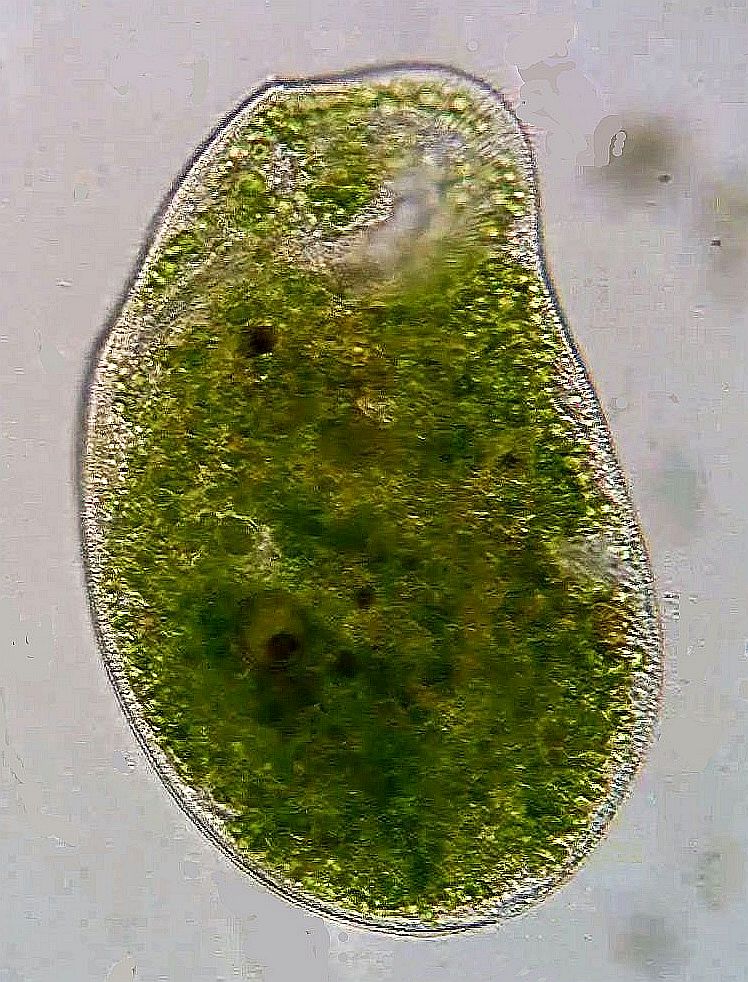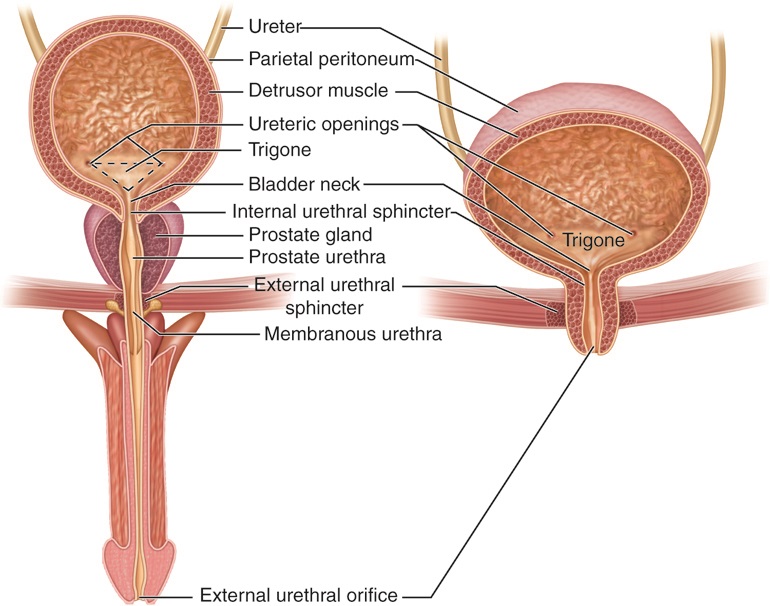|
Climacostomum Virens
''Climacostomum virens'' is a species of unicellular ciliate protists. It is one of just two formally described species in the genus Climacostomum. Description ''Climacostomum virens'' has a flexible but non-contractile body, long, roughly ovoid or harp-shaped, and flattened from back to front. It has a large posterior contractile vacuole, and a characteristic posterior indentation, or dimple, that is more pronounced in underfed individuals. The posterior vacuole surrounds the cytoproct (anus), through which food waste is eliminated. The macronucleus of ''Climacostomum virens'' is normally long and wormlike (vermiform). The cell's most prominent feature is its large oral apparatus, which occupies most of the anterior region. This structure features an adoral zone of membranelles (AZM) partly encircling a wide buccal cavity (mouth), which opens into the cytopharyngeal pouch where digestive vacuoles are formed before they travel down a distinctive long, bent tube into the body of ... [...More Info...] [...Related Items...] OR: [Wikipedia] [Google] [Baidu] |
Eukaryota
The eukaryotes ( ) constitute the Domain (biology), domain of Eukaryota or Eukarya, organisms whose Cell (biology), cells have a membrane-bound cell nucleus, nucleus. All animals, plants, Fungus, fungi, seaweeds, and many unicellular organisms are eukaryotes. They constitute a major group of Outline of life forms, life forms alongside the two groups of prokaryotes: the Bacteria and the Archaea. Eukaryotes represent a small minority of the number of organisms, but given their generally much larger size, their collective global biomass is much larger than that of prokaryotes. The eukaryotes emerged within the archaeal Kingdom (biology), kingdom Asgard (Archaea), Promethearchaeati and its sole phylum Promethearchaeota. This implies that there are only Two-domain system, two domains of life, Bacteria and Archaea, with eukaryotes incorporated among the Archaea. Eukaryotes first emerged during the Paleoproterozoic, likely as Flagellated cell, flagellated cells. The leading evolutiona ... [...More Info...] [...Related Items...] OR: [Wikipedia] [Google] [Baidu] |
Ciliate
The ciliates are a group of alveolates characterized by the presence of hair-like organelles called cilia, which are identical in structure to flagellum, eukaryotic flagella, but are in general shorter and present in much larger numbers, with a different wikt:undulating, undulating pattern than flagella. Cilia occur in all members of the group (although the peculiar Suctoria only have them for part of their biological life cycle, life cycle) and are variously used in swimming, crawling, attachment, feeding, and sensation. Ciliates are an important group of protists, common almost anywhere there is water—in lakes, ponds, oceans, rivers, and soils, including anoxic and oxygen-depleted habitats. About 4,500 unique free-living species have been described, and the potential number of extant species is estimated at 27,000–40,000. Included in this number are many Ectosymbiosis, ectosymbiotic and endosymbiotic species, as well as some Obligate parasite, obligate and Facultative paras ... [...More Info...] [...Related Items...] OR: [Wikipedia] [Google] [Baidu] |
Climacostomum From Friedrich Stein
''Climacostomum'' is a genus of unicellular ciliates, belonging to the class Heterotrichea. The genus has one well-described species, ''Climacostomum virens'', which usually carries a symbiotic alga, a variety of ''Chlorella'' that can be cultivated outside its host. Algae-free ( aposymbiotic) individuals are known, and a species that lacks algal symbionts, ''Climacostomum gigas'' Meunier 1907, has been identified, but not confirmed in recent literature. In its cortex, ''Climacostomum virens'' has colorless granules structurally similar to the defensive pigmentocysts found in its fellow Heterotrichs, ''Stentor coreuleus'' and ''Blepharisma japonicum''. When ''Climacostomum'' is threatened by a predator, such as the ciliate ''Dileptus margaritifer,'' these cortical cysts release a defensive cytotoxin called Climacostol. This substance has been synthesized in the laboratory and found to be highly toxic to certain species of ciliates. It is believed that this toxicity is accomplis ... [...More Info...] [...Related Items...] OR: [Wikipedia] [Google] [Baidu] |
Endosymbionts
An endosymbiont or endobiont is an organism that lives within the body or cells of another organism. Typically the two organisms are in a mutualistic relationship. Examples are nitrogen-fixing bacteria (called rhizobia), which live in the root nodules of legumes, single-cell algae inside reef-building corals, and bacterial endosymbionts that provide essential nutrients to insects. Endosymbiosis played key roles in the development of eukaryotes and plants. Roughly 2.2 billion years ago an archaeon absorbed a bacterium through phagocytosis, that eventually became the mitochondria that provide energy to almost all living eukaryotic cells. Approximately 1 billion years ago, some of those cells absorbed cyanobacteria that eventually became chloroplasts, organelles that produce energy from sunlight. Approximately 100 million years ago, a lineage of amoeba in the genus '' Paulinella'' independently engulfed a cyanobacterium that evolved to be functionally synonymous with traditiona ... [...More Info...] [...Related Items...] OR: [Wikipedia] [Google] [Baidu] |
Cytoplasm
The cytoplasm describes all the material within a eukaryotic or prokaryotic cell, enclosed by the cell membrane, including the organelles and excluding the nucleus in eukaryotic cells. The material inside the nucleus of a eukaryotic cell and contained within the nuclear membrane is termed the nucleoplasm. The main components of the cytoplasm are the cytosol (a gel-like substance), the cell's internal sub-structures, and various cytoplasmic inclusions. In eukaryotes the cytoplasm also includes the nucleus, and other membrane-bound organelles.The cytoplasm is about 80% water and is usually colorless. The submicroscopic ground cell substance, or cytoplasmic matrix, that remains after the exclusion of the cell organelles and particles is groundplasm. It is the hyaloplasm of light microscopy, a highly complex, polyphasic system in which all resolvable cytoplasmic elements are suspended, including the larger organelles such as the ribosomes, mitochondria, plant plasti ... [...More Info...] [...Related Items...] OR: [Wikipedia] [Google] [Baidu] |
Zoochlorella
Zoochlorella (: zoochlorellae) is a colloquial term for any green algae that lives symbiotically within the body of an aquatic invertebrate animal or a protozoan. Classification Zoochlorellae are various genera belonging to the classes Chlorophyceae and Trebouxiophyceae, historically treated as a single genus ''Zoochlorella'' due to their similar appearance to the genus ''Chlorella''. However, this genus was found to be polyphyletic through molecular phylogeny, and currently considered '' nomen rejiciendum''. As a consequence, the two species belonging to this obsolete genus have been transferred to different green algal genera. * ''Zoochlorella conductrix'' → '' Micractinium'' * ''Zoochlorella parasitica'' → '' Choricystis'' Origin The analogy between zoochlorellae and chloroplasts was used by the botanist Konstantin Mereschkowski in 1905 to argue about the symbiotic origin of chloroplasts (then called 'chromatophores', a term used for completely different stru ... [...More Info...] [...Related Items...] OR: [Wikipedia] [Google] [Baidu] |
Membranelle
Membranelles (also membranellae) are structures found around the mouth, or cytostome, in ciliates. They are typically arranged in series, to form an "adoral zone of membranelles", or AZM, on the left side of the buccal cavity (peristome). The membranelles are made up of kinetosomes arranged in groups to make up ''polykinetids''. The cilia The cilium (: cilia; ; in Medieval Latin and in anatomy, ''cilium'') is a short hair-like membrane protrusion from many types of eukaryotic cell. (Cilia are absent in bacteria and archaea.) The cilium has the shape of a slender threadlike proj ... which emerge from these structures appear to be fused and to function as a single membrane, which can be used to sweep particles of food into the cytostome, or for locomotion.Kudo, Richard R. Protozoology. 4th ed. Charles C. Thomas, 1954. p. 59. References Organelles Ciliate biology {{cell-biology-stub ... [...More Info...] [...Related Items...] OR: [Wikipedia] [Google] [Baidu] |
Metabolic Waste
Metabolic wastes or excrements are substances left over from metabolic processes (such as cellular respiration) which cannot be used by the organism (they are surplus or toxic), and must therefore be excreted. This includes nitrogen compounds, water, CO2, phosphates, sulphates, etc. Animals treat these compounds as excretes. Plants have metabolic pathways which transforms some of them (primarily the oxygen compounds) into useful substances. All the metabolic wastes are excreted in a form of water solutes through the excretory organs ( nephridia, Malpighian tubules, kidneys), with the exception of CO2, which is excreted together with the water vapor throughout the lungs. The elimination of these compounds enables the chemical homeostasis of the organism. Nitrogen wastes The nitrogen compounds through which excess nitrogen is eliminated from organisms are called nitrogenous wastes () or nitrogen wastes. They are ammonia, urea, uric acid, and creatinine. All of these subst ... [...More Info...] [...Related Items...] OR: [Wikipedia] [Google] [Baidu] |
Contractile Vacuole
A contractile vacuole (CV) is a sub-cellular structure (organelle) involved in osmoregulation. It is found predominantly in protists, including unicellular algae. It was previously known as pulsatile or pulsating vacuole. Overview The contractile vacuole is a specialized type of vacuole that regulates the quantity of water inside a cell. In freshwater environments, the concentration of solutes is hypotonic, lower outside than inside the cell. Under these conditions, osmosis causes water to accumulate in the cell from the external environment. The contractile vacuole acts as part of a protective mechanism that prevents the cell from absorbing too much water and possibly lysing (rupturing) through excessive internal pressure. The contractile vacuole, as its name suggests, expels water out of the cell by contracting. The growth (water gathering) and contraction (water expulsion) of the contractile vacuole are periodical. One cycle takes several seconds, depending on the sp ... [...More Info...] [...Related Items...] OR: [Wikipedia] [Google] [Baidu] |
Climacostomum Virens From Kahl
''Climacostomum'' is a genus of unicellular ciliates, belonging to the class Heterotrichea. The genus has one well-described species, ''Climacostomum virens'', which usually carries a symbiotic alga, a variety of ''Chlorella'' that can be cultivated outside its host. Algae-free ( aposymbiotic) individuals are known, and a species that lacks algal symbionts, ''Climacostomum gigas'' Meunier 1907, has been identified, but not confirmed in recent literature. In its cortex, ''Climacostomum virens'' has colorless granules structurally similar to the defensive pigmentocysts found in its fellow Heterotrichs, ''Stentor coreuleus'' and ''Blepharisma japonicum''. When ''Climacostomum'' is threatened by a predator, such as the ciliate ''Dileptus margaritifer,'' these cortical cysts release a defensive cytotoxin called Climacostol. This substance has been synthesized in the laboratory and found to be highly toxic to certain species of ciliates. It is believed that this toxicity is accomplis ... [...More Info...] [...Related Items...] OR: [Wikipedia] [Google] [Baidu] |
Protist
A protist ( ) or protoctist is any eukaryotic organism that is not an animal, land plant, or fungus. Protists do not form a natural group, or clade, but are a paraphyletic grouping of all descendants of the last eukaryotic common ancestor excluding land plants, animals, and fungi. Protists were historically regarded as a separate taxonomic kingdom known as Protista or Protoctista. With the advent of phylogenetic analysis and electron microscopy studies, the use of Protista as a formal taxon was gradually abandoned. In modern classifications, protists are spread across several eukaryotic clades called supergroups, such as Archaeplastida ( photoautotrophs that includes land plants), SAR, Obazoa (which includes fungi and animals), Amoebozoa and " Excavata". Protists represent an extremely large genetic and ecological diversity in all environments, including extreme habitats. Their diversity, larger than for all other eukaryotes, has only been discovered in rece ... [...More Info...] [...Related Items...] OR: [Wikipedia] [Google] [Baidu] |
Unicellular Organism
A unicellular organism, also known as a single-celled organism, is an organism that consists of a single cell, unlike a multicellular organism that consists of multiple cells. Organisms fall into two general categories: prokaryotic organisms and eukaryotic organisms. Most prokaryotes are unicellular and are classified into bacteria and archaea. Many eukaryotes are multicellular, but some are unicellular such as protozoa, unicellular algae, and unicellular fungi. Unicellular organisms are thought to be the oldest form of life, with early organisms emerging 3.5–3.8 billion years ago. Although some prokaryotes live in colonies, they are not specialised cells with differing functions. These organisms live together, and each cell must carry out all life processes to survive. In contrast, even the simplest multicellular organisms have cells that depend on each other to survive. Most multicellular organisms have a unicellular life-cycle stage. Gametes, for example, are reprodu ... [...More Info...] [...Related Items...] OR: [Wikipedia] [Google] [Baidu] |







